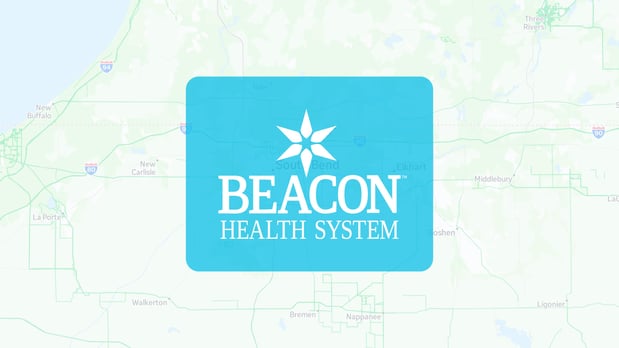Voice disorders
Learn more about the causes of common voice disorders, such as laryngitis and granuloma, and how Mayo Clinic diagnoses and treats them.
Overview
People develop a voice disorder for many reasons. A voice disorder is a change in how the voice sounds. Health care providers trained in ear, nose and throat illnesses and speech-language pathologists diagnose and treat voice issues.
Treatment depends on what's causing the voice change. Treatment can include voice therapy, drugs, shots or surgery.
Causes
The voice box, also called the larynx, is made of a smooth covering, muscle and soft, moist areas. The voice box sits at the top of the windpipe, also known as the trachea, and the base of the tongue. The vocal cords vibrate to create sound.
Air moving through the voice box causes the vocal cords to vibrate and brings them closer together. The vocal cords also help close the voice box during swallowing to stop you from breathing in food or liquid.
If vocal cords become swollen, or inflamed, develop growths or can't move as they should, they can't work properly. Any of these might cause a voice disorder.
Some common voice disorders include:
- Laryngitis
- Voice changes related to the brain and nervous system, known as spasmodic dysphonia (spaz-MOD-ki dis-FOE-nee-uh)
- Polyps, nodules or cysts on the vocal cords — growths that aren't cancer
- Precancerous and cancerous growths
- Vocal cord paralysis or weakness
- White patches, also known as leukoplakia (loo-koh-PLAY-key-uh)
Risk factors
Many factors can lead to a voice disorder, such as:
- Aging
- Alcohol use
- Allergies
- Conditions related to the brain and nervous system, such as Parkinson's disease or a stroke
- Gastroesophageal reflux disease (GERD)
- Illnesses, such as colds or upper respiratory infections
- Scarring from neck surgery or from trauma to the front of the neck
- Screaming
- Smoking
- Throat cancer
- Throat dehydration
- Thyroid problems
- Voice misuse or overuse
Diagnosis
Your health care provider will ask you about your voice problems and do an exam. Your provider might give you a numbing medicine before the exam. Your provider might use one or more of these tools:
- Mirror. Your provider might put into your mouth an instrument like a dental mirror. It's long, and the mirror is angled.
- Flexible laryngoscope. This is a bendable tube that holds a light and camera. A provider puts it in through the nose.
- Rigid laryngoscope. A provider puts this stiff viewing tube in through the mouth.
- Videostroboscope. A camera combined with a flashing light gives a slow-motion view of the vocal cords as they move.
A care provider may use other tests such as:
- Sound analysis. Using a computer, this test can measure anything unusual in the sound the vocal cords make.
- Laryngeal electromyography. Small needles put in through the skin measure the electric currents in the voice box muscles.
Treatment
Depending on your diagnosis, your care provider might suggest one or more treatments:
- Rest, liquids and voice therapy. Like every part of the body, the vocal cords need regular rest and fluids. Speech pathology specialists teach how to use the voice better, how to clear the throat and how much liquid to drink.
- Allergy treatments. If an allergy is making too much mucus in the throat, a health care provider can find the allergy's cause and treat it.
- Stopping smoking. Quitting smoking can help improve the voice and many other areas of health. For example, it can boost heart health and lower cancer risk.
- Medicine. Many medicines can be used to treat voice disorders. Depending on the cause of the voice disorder, medicine can reduce swelling, or inflammation, treat gastroesophageal reflux or stop blood vessel regrowth. Medicine can be taken by mouth, injected into the vocal cords or applied to the surface of the vocal cords during surgery.
Procedures
-
Removal of growths. Growths on the vocal cords, even growths that aren't cancer, may need to be removed during surgery. A surgeon can remove growths using microsurgery, carbon-dioxide laser surgery, and when appropriate, other laser treatments, including potassium titanyl phosphate (KTP) laser treatment.
KTP laser treatment is a state-of-the-art therapy that treats lesions on the vocal cords by cutting off the blood supply to the growth. This allows removal of the growth while leaving intact the most underlying tissue.
- Injections. Shots of tiny amounts of purified botulinum toxin into the skin of the neck can help stop muscle spasms or unusual movements. This drug treats a movement issue related to the brain and nervous system. This condition, called spasmodic dysphonia, affects the vocal muscles of the larynx.
Sometimes one vocal cord can't move. One paralyzed vocal cord can cause hoarseness. It also can cause choking when drinking liquids. But it rarely causes trouble when swallowing solid foods. Sometimes the problem goes away with time.
If the problem doesn't go away, one of two procedures can push the paralyzed vocal cord closer to the middle of the windpipe. Either procedure allows the vocal cords to meet and vibrate closer together. This improves the voice and allows the larynx to close when swallowing. Treatments include:
- Fat or collagen injection. Injecting body fat or human-made collagen, either through the mouth or the skin on the neck, adds bulk to the paralyzed vocal cord. It also treats vocal cord weakness.
- Thyroplasty. A small opening created in the tissue, also called cartilage, from the outside of the voice box. A surgeon puts an implant into the opening and pushes it against the paralyzed vocal cord.
Read more about vocal cord paralysis treatment and allergies at Mayo Clinic.
© 1998-2025 Mayo Foundation for Medical Education and Research (MFMER). All rights reserved.
Terms of Use


